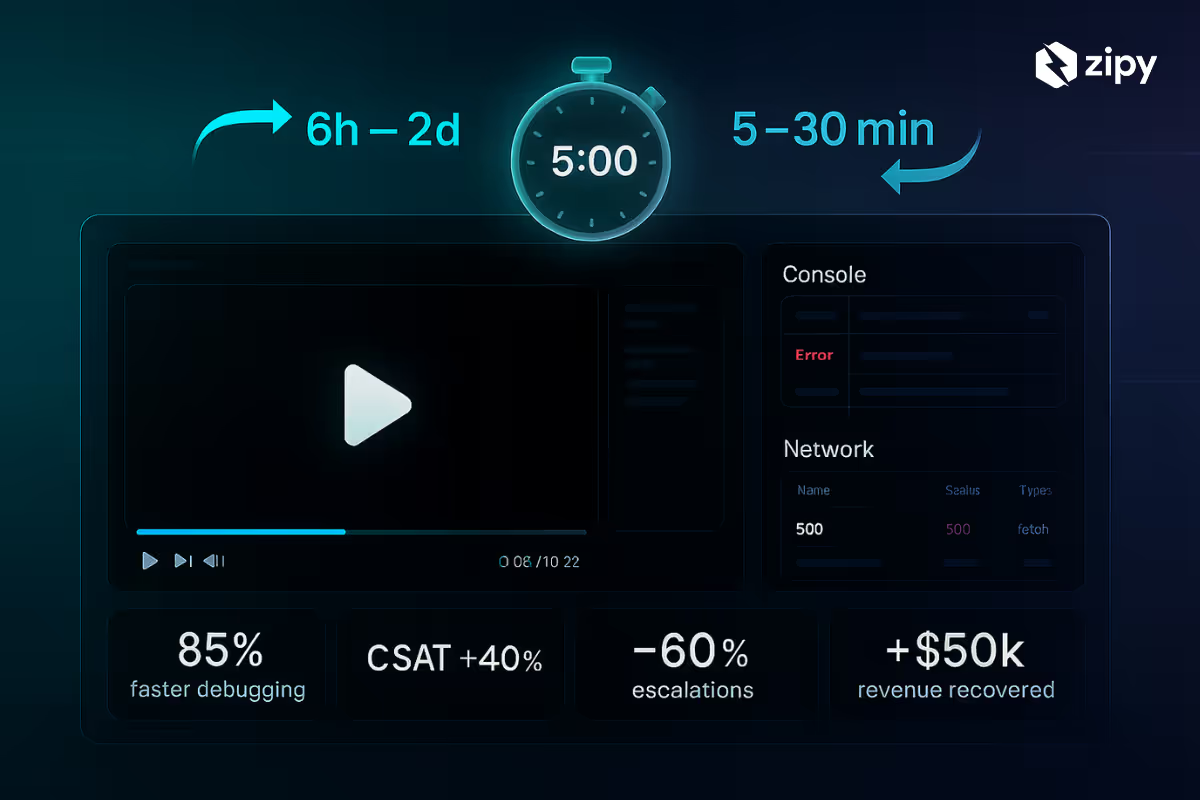In the world of web development, HTTP status codes play a crucial role in communication between servers and clients. Among these status codes, the 201 Created status code holds particular significance, indicating that a request has been fulfilled and a new resource has been created. In this article, we'll delve into the details of the 201 status code, exploring its use cases, implementation in JavaScript, best practices, and testing methodologies.
What is a 201 Status Code?
HTTP status codes are three-digit numbers returned by a web server to indicate the outcome of a client's request. The 200 series of status codes generally denote success, and the 201 status code specifically signals that a request has been fulfilled and has resulted in the creation of a new resource. When a server responds with a 201 status code, it typically includes a Location header indicating the URL of the newly created resource.
Catch HTTP Network errors proactively with Zipy. Sign up for free!
Try Zipy now
What are the Possible Use Cases for 201 Status Code?
The 201 status code finds various applications across web development scenarios, including:
- Creating New Resources: Whenever a client submits data to a server to create a new resource, such as posting a new article on a blog or adding a new user to a database, the server can respond with a 201 status code to indicate successful creation.
- Asynchronous Processing: In cases where resource creation involves time-consuming operations, such as processing large files or performing complex computations, the server may accept the request, acknowledge receipt with a 201 status code, and continue processing the request asynchronously.
- RESTful APIs: When designing RESTful APIs, using the 201 status code for successful resource creation aligns with best practices, providing clear and standardized communication between clients and servers.
How to Implement 201 Status Code in JavaScript
Implementing the 201 status code in JavaScript involves handling server responses appropriately. Below is a basic example using the Fetch API:
fetch('/create-resource', {
method: 'POST',
body: JSON.stringify(data),
headers: {
'Content-Type': 'application/json'
}
})
.then(response => {
if (response.status === 201) {
// Handle successful creation
} else {
// Handle other status codes
}
})
.catch(error => console.error('Error:', error));
Best Practices for Using 201 Status Code
To make the most of the 201 status code in your applications, consider the following best practices:
- Always include a Location header in the response specifying the URL of the newly created resource.
- Provide clear documentation for clients on how to interpret and handle the 201 status code.
- Ensure consistency in the use of status codes across your application to maintain clarity and predictability.
How to Test 201 Status Code on Postman
Postman provides a convenient way to test HTTP status codes, including the 201 status code. To test:
- Send a POST request to the desired endpoint.
- Check the response status code in the response panel. If it's 201, the request was successful.
How to Test 201 Status Code in DevTools Browser in Chrome
Testing the 201 status code using Chrome DevTools is straightforward:
- Open Chrome DevTools by pressing F12 or right-clicking on the page and selecting "Inspect."
- Navigate to the Network tab.
- Perform the action that triggers the creation of a new resource.
- Check the Network tab for the request entry. The status column should display "201 Created."
Debug and fix API errors with Zipy Error Monitoring.
Sign up for free
Frequently Asked Questions
Q: When should I use the 201 status code?
A: Use the 201 status code when a request results in the successful creation of a new resource on the server.
Q: Can I use the 201 status code with other HTTP methods besides POST?
A: Yes, you can use the 201 status code with other methods like PUT or PATCH if they result in resource creation.
Q: What should I do if the creation of a resource fails after receiving a 201 status code?
A: If resource creation fails after receiving a 201 status code, consider rolling back any partial changes and handling the error gracefully.
Q: Does the 201 status code indicate that the resource creation process is complete?
A: Not necessarily. The 201 status code indicates that the request was successful and a new resource was created, but additional processing or validation may still be required.
Q: How does the 201 status code differ from the 200 status code?
A: While both indicate success, the 200 status code is more general and doesn't specifically signify resource creation, unlike the 201 status code.
Conclusion
Understanding the nuances of HTTP status codes, including the 201 Created status code, is essential for effective web development. By leveraging this status code appropriately, developers can ensure clear communication between clients and servers during resource creation processes. To streamline error monitoring and handling, consider incorporating Zipy's tool, which offers session replay capabilities. Visit Zipy for more information.
Read more resources on 2xx status codes
- A comprehensive guide on HTTP Status Codes: All 63 explained
- The best HTTP Network log analysis tool | Zipy AI
- The Significance of the 200 OK HTTP Status Code
- Navigating the 202 Accepted HTTP Status Code
- 203 Non-Authoritative Info: What It Means - HTTP Status Code 203
- The 204 No Content Status Code Explained - HTTP Status Code 204
- The Role of the 205 Reset Content - HTTP Status Code 205
- How the 206 Partial Content Status Code Works - HTTP Status Code 206
- Exploring the 207 Multi-Status HTTP Response Code
- Understanding 208 Already Reported - HTTP Status Code
- The 226 IM Used HTTP Status Code: An Overview
.svg)







.avif)



.webp)